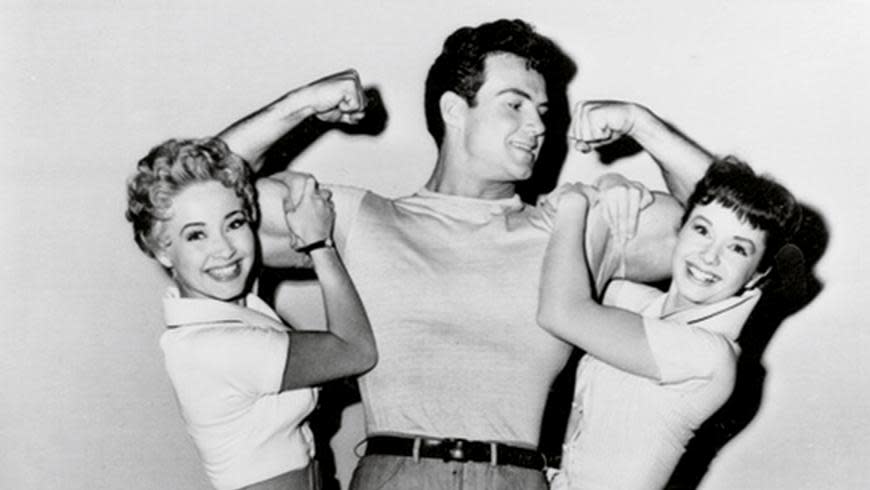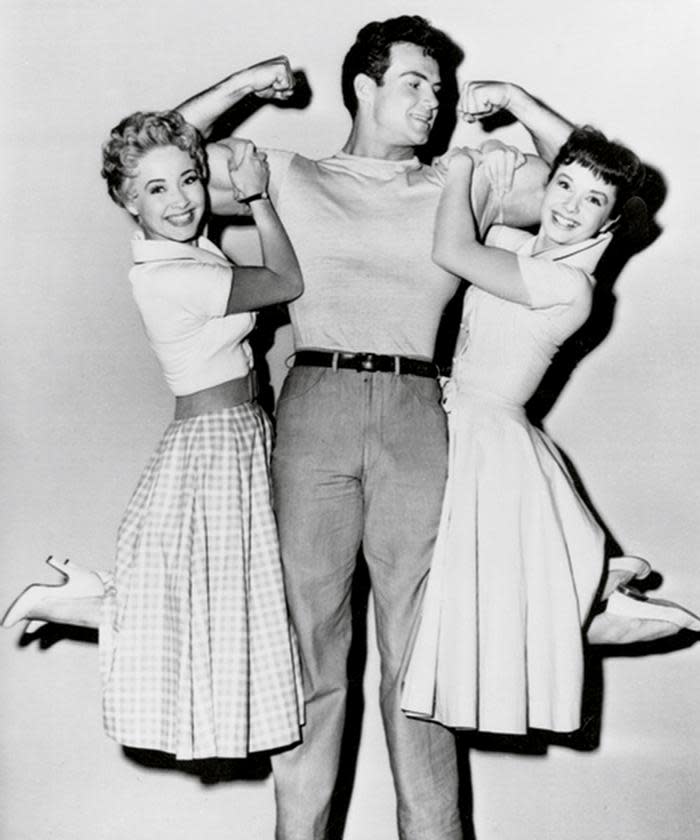Learn from 100 years of muscle men
1920s: Joseph Pilates’ new method
This was an era when exercise by choice was for the wealthy and the working class released their daily dose of sweat courtesy of hard manual labour. With gyms the preserve of the rich, Joseph Pilates created a system of body-weight exercises that improved posture and strengthened the core muscles while maintaining flexibility. It’s a system that’s stood the test of time: a recent study in the Journal of Bodywork and Movement Therapies found that doing 1-2 bouts of Pilates a week improves mood, sleep quality and lower back strength. Still think Pilates is the reserve of latte-sipping mums? Well, LeBron James is a noted practitioner. Can you picture King James in a leotard?
Related: Five ways to burn fat while you sleep
1930s: Joseph Hise’s deep-breathing squats
Hise was a dedicated lifter struggling to make gains when he added squats to his program and promptly slapped on 13 kilograms of box-fresh muscle. He went on to invent a unique squatting technique where you do a single set of 20 squats, doing the first 10 reps at a normal speed, then, from reps 10-20, you take three deep breaths after each rep. Afterwards, he explained, you should feel like you’ve run 1500 metres at a record speed. Hise’s technique spread like wildfire amongst the strongmen of the day, ensuring the squat’s ascension to weight-lifting royalty.
1940s: Reg Park’s 5x5
This burly Yorkshireman garnered three Mr Universe titles employing a simple but wildly successful strategy: five reps of five sets on each body part to stoke a full-body burn. Later in life this earned him the respect of a young fanboy, Arnold Schwarzenegger, who Park went on to mentor with extreme success. Indeed, full-body workouts really are the answer to faster gains. A study at the University of Alabama discovered that guys who hit their entire body in each workout, rather than isolating muscle groups, gained on average 2.25kg more muscle each month.
1950s: Steve Reeves’ drop sets
This Herculean actor built his Mr America physique and swoon-worthy arms by doing as many reps as he could on an exercise then reducing the weight and going again until his muscles failed – a painful practice called drop sets. Only recently has the science emerged to support Reeves’ tactic, with research in the Journal of Sports Medicine and Physical Fitness finding that the addition of drop sets to the end of a heavy resistance exercise forces the body to release more growth hormone.
1960s: Dave Draper’s supersets
This blond Californian beach boy’s torso was at the forefront of a golden age when bodybuilders looked manly, not freaky. He built his spectacular bulk using supersets. These days, supersets are so ubiquitous in the world of lifting it’s impossible to decipher whether Draper actually invented them – but he certainly perfected them. While most lifters of his era supersetted exercises that targeted the same muscle groups, Draper developed the notion of reciprocal supersets, linking a muscle with its antagonist to save time, torch kilojoules and hone an artistically balanced physique.
1970s: Arnold Swarzenegger’s press
Bodybuilding’s flagship muscleman built his multi-million-dollar package by doing workouts that specifically targeted each body part, a gamechanger at the time. However, his name will always be shackled to the exercise of his own invention – the Arnold press. Research in the Journal of Strength and Conditioning Research found that pressing dumbbells overhead while standing uses the maximum number of muscles in your shoulders and core. Science aside, anything bearing the great man’s name is worth including in your routine.
Related: How Australia's fittest man stays motivated
1980s: Mike Mentzer’s Rest-Pause technique
Mentzer, an unconventional cigar-puffing bodybuilder, founded a system called “Heavy Duty” that involved completing 10-rep sets with a weight so heavy he could only manage five continuous reps. To hit his 10-rep mark, Mentzer would take several 10-second mid-set breathers, giving him the impetus to crank out the final reps. Unsurprisingly, a study in the Journal of Science and Medicine in Sport found that resting mid-set increases power and strength more than thrashing out a continuous set. Power hungry? This technique is the nourishment you need.
1990s: Dorian Yates’ High-Intensity Training
The stocky Englishman won six Mr Olympia titles employing a system where he trained at red-line intensity for a bare 45 minute at a time, using many of the principles in Mentzer’s “Heavy Duty” system. These abbreviated sessions gifted him more recovery time than other brawn-building systems, allowing his muscles maximum time to repair and grow. The result was an unprecedented 118kg competition weight. The big trick was taking his muscles to failure on each and every set. And you don’t need a scientific journal to tell you this is an outstanding way to increase strength and build muscle.
2000s: Greg Glassman’s CrossFit
Founded in 2000 by Glassman and Lauren Jenai, CrossFit became the first training technique to morph into a sport in itself. Bodybuilding purists may quibble, but there’s no doubt CrossFit builds muscle while also honing endurance and athleticism. Research in the Journal of Strength and Conditioning Research found that doing it for 10 weeks dramatically improves aerobic capacity while building muscle – with or without the hipster beard.

 Yahoo Lifestyle
Yahoo Lifestyle 

